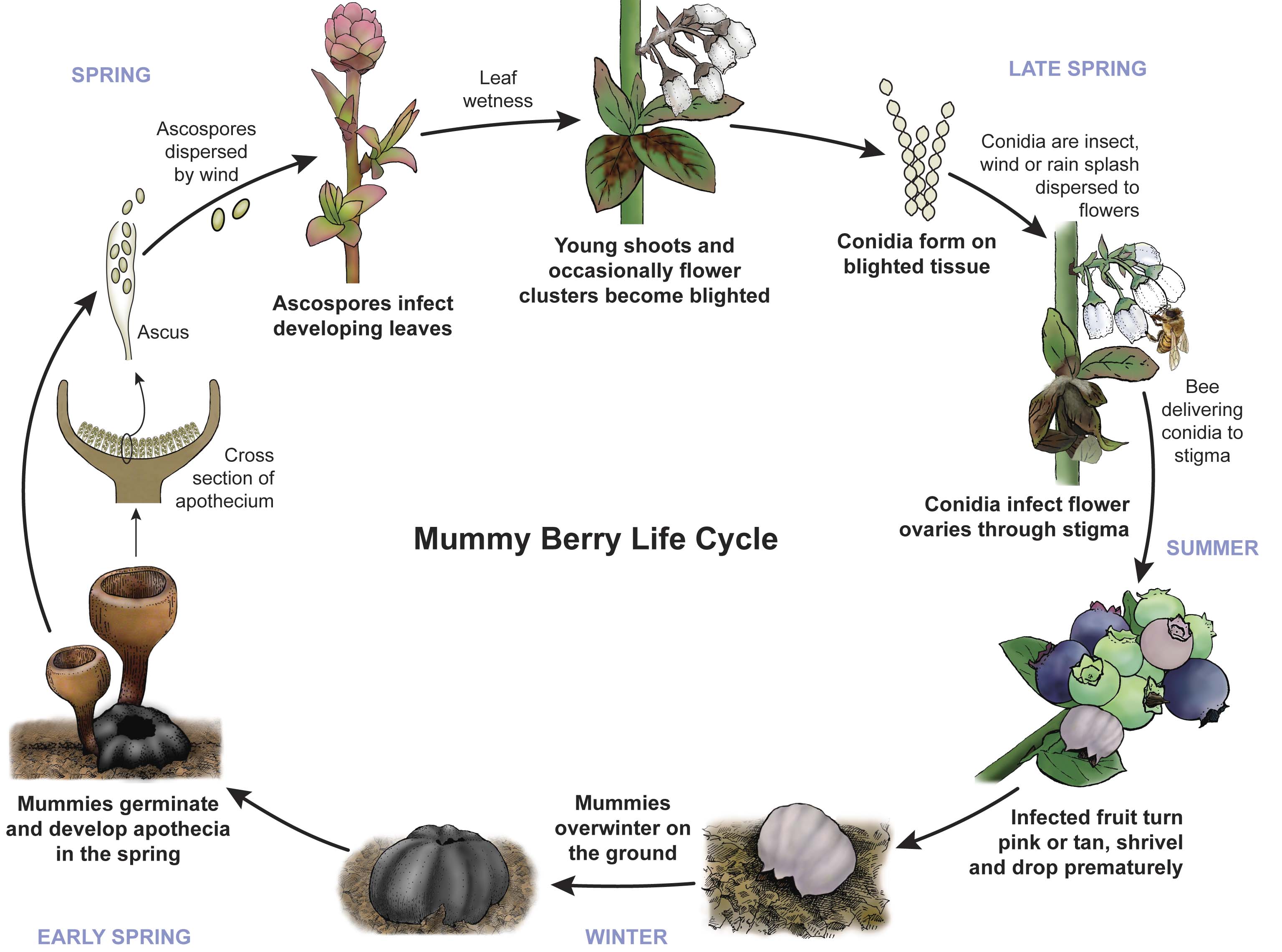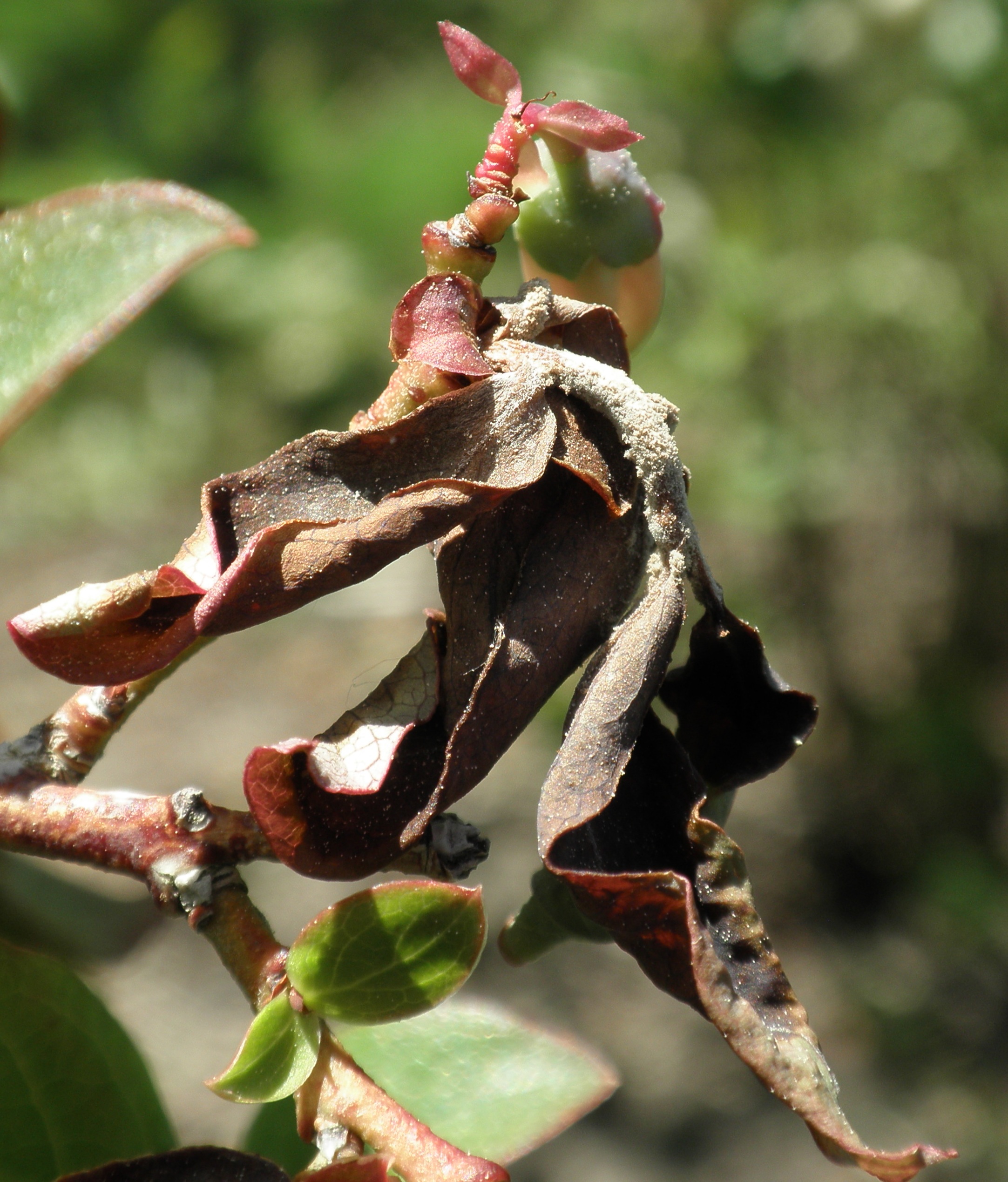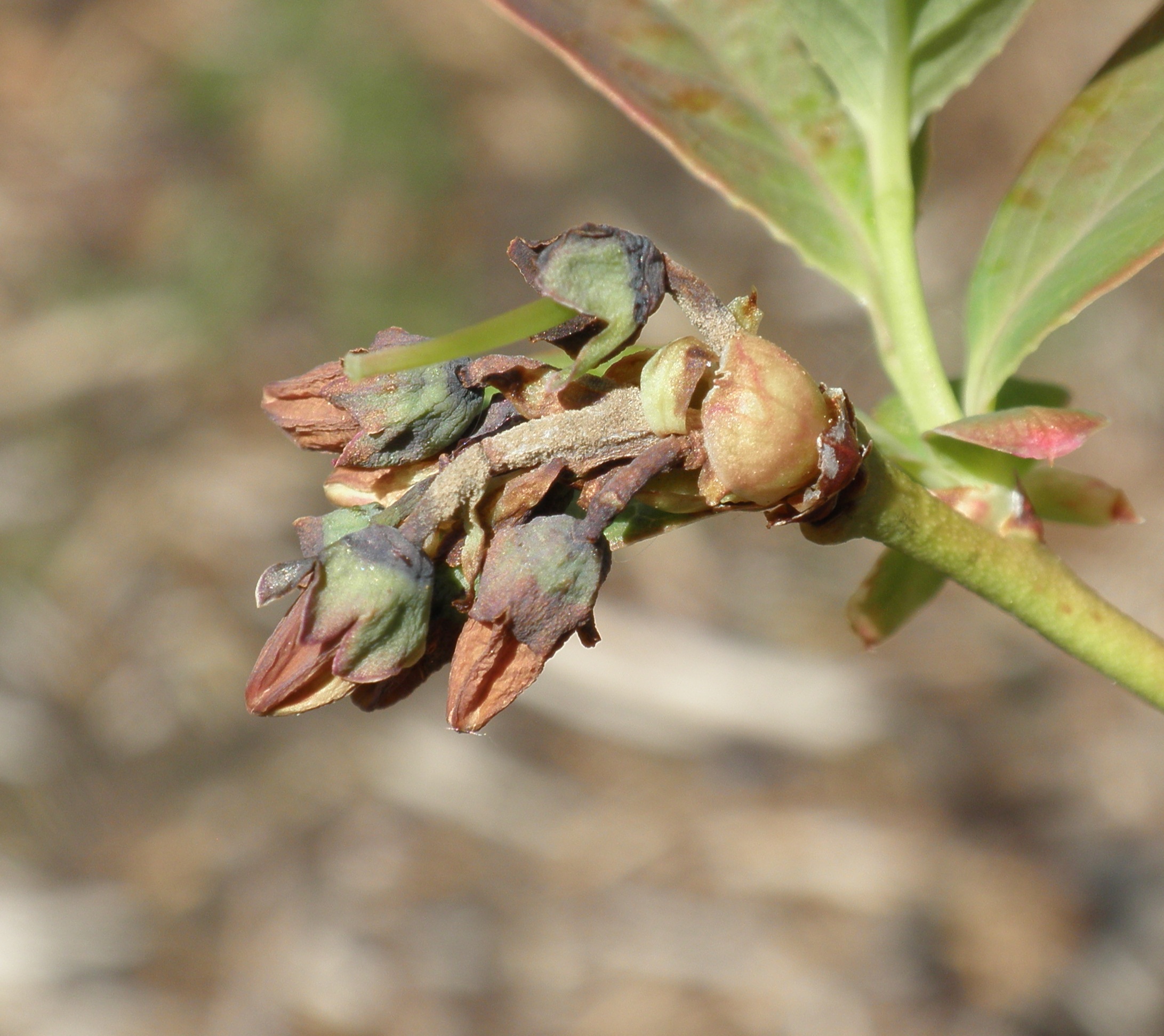Mummy berry has returned and new products are available for control
Early season fungicide choices influence mummy berry control. Consider your management options.

Michigan blueberries are at green tip. These shoots are very susceptible mummy berry infections. Mummy berry apothecia, also known as trumpets or mushrooms, have been found in west Michigan in Ottawa County, and are probably present throughout southwest Michigan (Photo 1). Significant soil moisture and warmer temperatures this week will push mummy berry apothecia development. We can expect ascospore—the first infection spore of the disease—discharge this week and growers need to protect green tissue.
Background on the disease
Mummy berry is a very serious disease of highbush blueberries. Some cultivars are particularly susceptible, such as ‘Blueray.’ Research has shown that the optimum temperature for apothecia formation and infection is 50 to 57 degrees Fahrenheit (10 to 14 degrees Celsius). Extended wet periods and frost also promote infection. Please see previous Michigan State University Extension articles on mummy berry for more information about the disease: “Scouting and managing mummy berry in blueberries” and “The rise of the mummy: Mummy berries in Michigan.” See the Michigan Blueberry Facts Mummy Berry Fctsheet (E2846) for more information about the biology and life cycle of this disease (Photo 2).

Early season control options in blueberries
At the beginning of the season, blueberry growers should focus on controlling mummy berry, anthracnose and phomopsis. Dormant sprays of Lime sulfur or Sulforix aimed at these diseases can also reduce inoculum of fruit rot pathogens overwintering on infected twigs and remnants of last year’s fruit clusters.
During green tip, fungicide protection focuses on preventing mummy berry shoot strike and flower strike infections (Photos 3 and 4). A preventative spray program is the most important aspect of control. Fungicides work best when applied preventatively (before infection). Typically, two to four fungicide applications are devoted to controlling shoot strikes every year. While the risk of fungicide resistance development appears to be low for this pathogen, it is still advisable to alternate fungicide chemical classes. These fungicide classes are indicated by different Fungicide Resistance Action Committee (FRAC) code numbers. We recommend incorporating a multisite fungicide such as chlorothalonil (Bravo or Echo) prior to bloom to prevent resistance development.

The most effective products for mummy berry control belong to FRAC code 3 (e.g., Indar and Tilt). However, recent research has found that there could be detrimental effects from FRAC 3 fungicides to pollinators. We recommend you utilize FRAC 3 fungicides in the early part of your management program and keep mummy berry inoculum low. Switch away from FRAC 3 fungicides as we approach bloom to other fungicide classes (e.g., FRAC codes 7, 11, 17 or newer products). As we approach bloom and pollinators are present, we recommend 1) spraying after sunset, 2) not spraying hives directly, and 3) avoiding tank-mixing pesticides. The interaction between fungicides and pollinators is an active area of research and the recommendations are fluid and may change in future years as we learn more.

New products available for control
Several new products are now labeled in blueberries for mummy berry control and the Small Fruit and Hop Pathology Program at MSU has found them to provide moderate to excellent control for mummy berry. Please consult the E0154 Fruit Management Guide for specific information about efficacy. Some of these products include Kenja (FRAC 7), Propulse (FRAC 3/7), Stargus (FRAC BM02) and Lifegard (FRAC P06).



 Print
Print Email
Email
